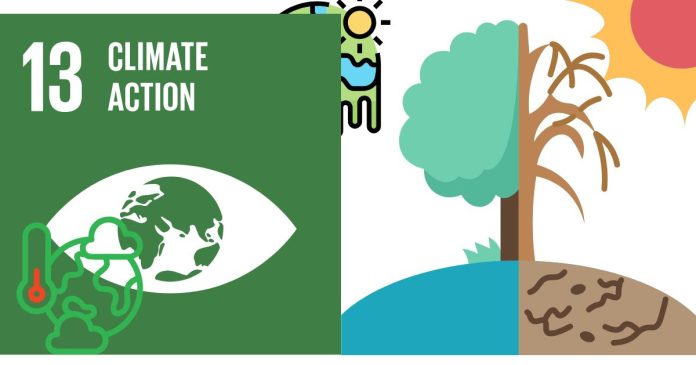Climate zones on Earth can be broadly classified into major categories, based on temperature, precipitation, and seasonal variations. Within these major climate zones, there are subclimates that offer more detailed classifications. The 12 subclimate zones refer to the more specific subdivisions of climate types, which help describe local variations within larger climate zones. These subclimates are part of the Köppen climate classification system, one of the most widely used systems for classifying climates.
1. Tropical Wet (Af)
- Characteristics: High temperatures year-round with heavy rainfall and no distinct dry season.
- Example Areas: Amazon Rainforest, Central Africa, Southeast Asia.
- Subzones: Tropical rainforests.
2. Tropical Wet and Dry (Aw)
- Characteristics: A distinct dry season and a wet season with high temperatures throughout the year.
- Example Areas: Parts of India, Central America, parts of Brazil.
- Subzones: Savannas, tropical grasslands.
3. Arid (Desert) (BWh, BWk)
- Characteristics: Very dry with little precipitation. The temperatures can vary, with hot deserts having high daytime temperatures and cooler nights.
- Subzones:
- Hot desert (BWh): Extremely hot year-round (e.g., Sahara).
- Cold desert (BWk): Cooler temperatures, typically in higher latitudes (e.g., Great Basin, North America).
4. Semiarid (Steppe) (BSh, BSk)
- Characteristics: Slightly more rainfall than deserts, but still dry and subject to significant evaporation. These regions often have grasslands or shrublands.
- Subzones:
- Hot semi-arid (BSh): Hot summers, mild winters (e.g., parts of India, Northern Mexico).
- Cold semi-arid (BSk): Cooler climates with large seasonal temperature fluctuations (e.g., areas of Central Asia).
5. Mediterranean (Csa, Csb)
- Characteristics: Mild, wet winters and hot, dry summers. This climate is often found along coastal regions.
- Subzones:
- Hot summer Mediterranean (Csa): Hot, dry summers with mild, wet winters (e.g., parts of California, Mediterranean coast).
- Warm summer Mediterranean (Csb): Cooler summers with more moderate temperatures (e.g., parts of Southern Europe).
6. Humid Subtropical (Cfa, Cfb)
- Characteristics: Hot, humid summers with mild winters. Precipitation is fairly evenly distributed throughout the year.
- Subzones:
- Hot humid subtropical (Cfa): High temperatures and humidity in summer (e.g., Southeastern United States).
- Warm humid subtropical (Cfb): Mild summers and cooler winters (e.g., parts of New Zealand and parts of Southern Europe).
7. Oceanic (Cfc, Cwb)
- Characteristics: Mild temperatures year-round with relatively small temperature variations. Rainfall is frequent but light.
- Subzones:
- Oceanic climate (Cfc): Mild and moist conditions year-round (e.g., coastal regions of the UK and parts of Ireland).
- Subtropical highland (Cwb): Mild temperatures, but warmer summers (e.g., areas in the Andes Mountains of South America).
8. Continental (Dfa, Dfb, Dfc, Dfd)
- Characteristics: Large temperature differences between summer and winter. Winters can be very cold, and summers are often hot.
- Subzones:
- Hot summers (Dfa): Hot summers, very cold winters (e.g., parts of the United States, Central Asia).
- Warm summers (Dfb): Moderate summer temperatures with cold winters (e.g., parts of Canada, Northern Europe).
- Cool summers (Dfc): Cooler summers, very cold winters (e.g., parts of Siberia).
- Very cold winters (Dfd): Extremely cold winters, with harsh, dry summers (e.g., parts of Russia, Northern Canada).
9. Subarctic (Dsc, Dsd)
- Characteristics: Very cold winters with short, cool summers.
- Subzones:
- Subarctic climates (Dsc, Dsd): These climates are found in high latitudes, with extreme seasonal temperature variations and very cold winters (e.g., Siberian regions, parts of Alaska).
10. Tundra (ET)
- Characteristics: Very cold temperatures year-round, with short, cool summers. There is minimal precipitation, and the ground may remain frozen for most of the year.
- Example Areas: Northern parts of Canada, Alaska, and the Arctic.
11. Ice Cap (EF)
- Characteristics: Extremely cold conditions with no vegetation. The temperature rarely rises above freezing, and the region is covered with ice and snow.
- Example Areas: Antarctica, Greenland.
12. Highland (H)
- Characteristics: Climate that varies with altitude and the local environment. In highland regions, temperatures are typically cooler than in nearby lowlands, with varying amounts of rainfall.
- Example Areas: The Himalayas, the Andes, and the Rockies.


